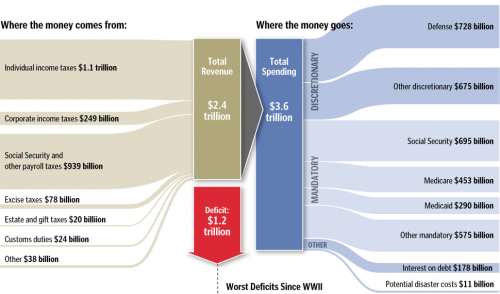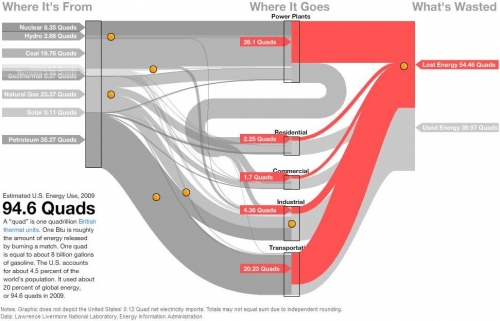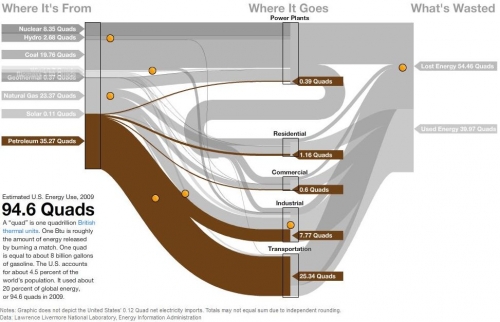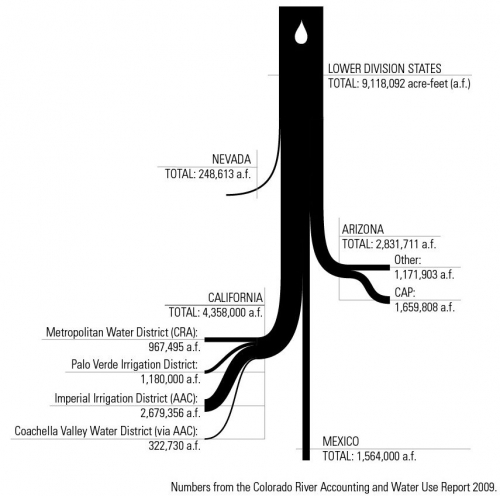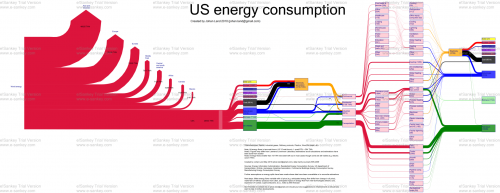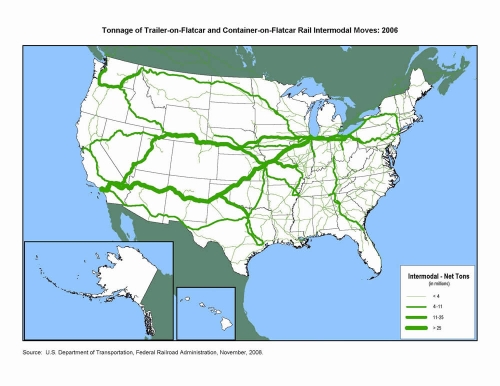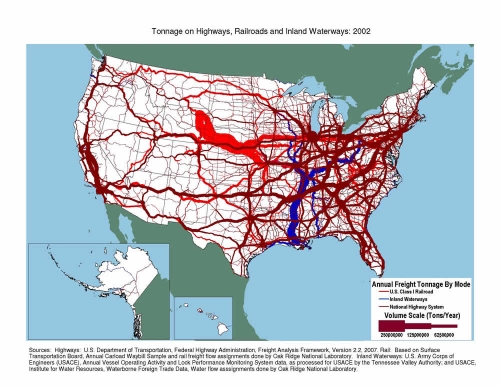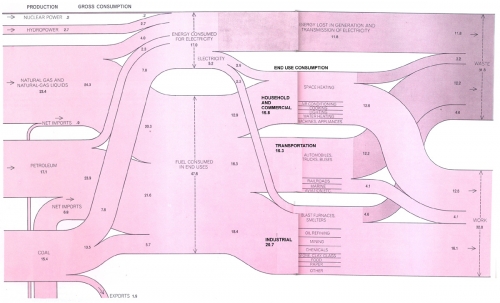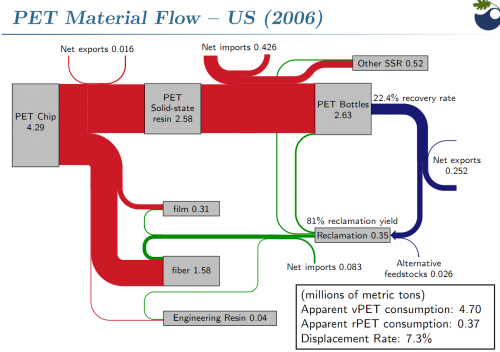In a post on the winners of the SND 31 competition over at the Infographics News Blog I found the below diagram on the President’s Budget. Originally published by the Washington Post it has won an Award of Excellence in the 31st edition of the Society of News Design contest in the Infographics / Breaking News section.
It is not really a Sankey diagram, since the arrows are not explicitly directed. But it has weighted arrows/bands, in this case representing $$$. This infographic was maybe inspired by this one from Spain that was – after lengthy discussion – named a “distribution diagram”.
I cropped the lower part of the infographic that had details on the deficit as bar chart. See original, full infographic file here.
Two more infographics in this post have characteristics of Sankey diagrams, and I might post them here on the Sankey Diagrams blog, if I run out of ideas one day…
